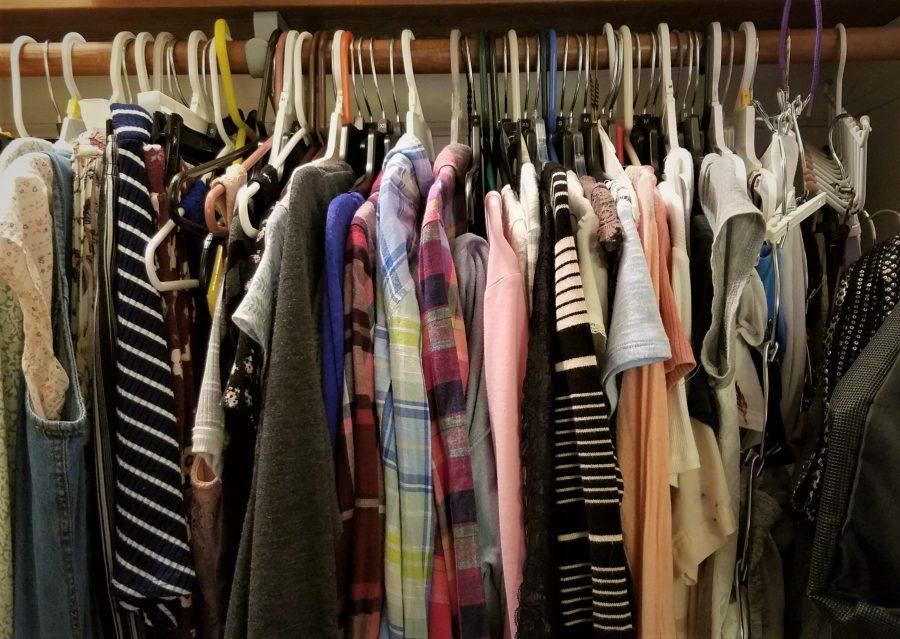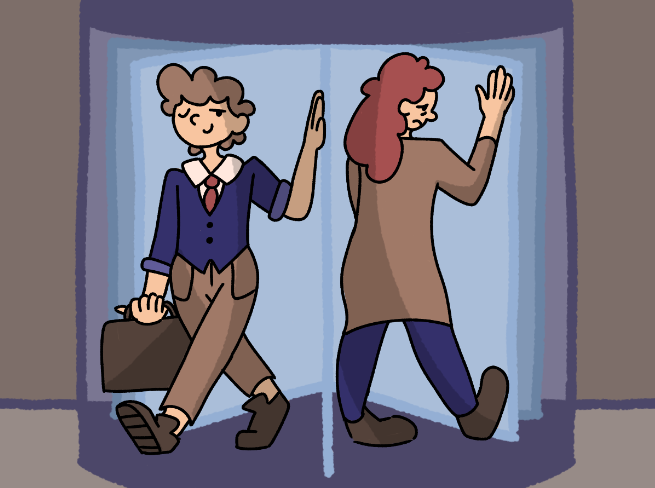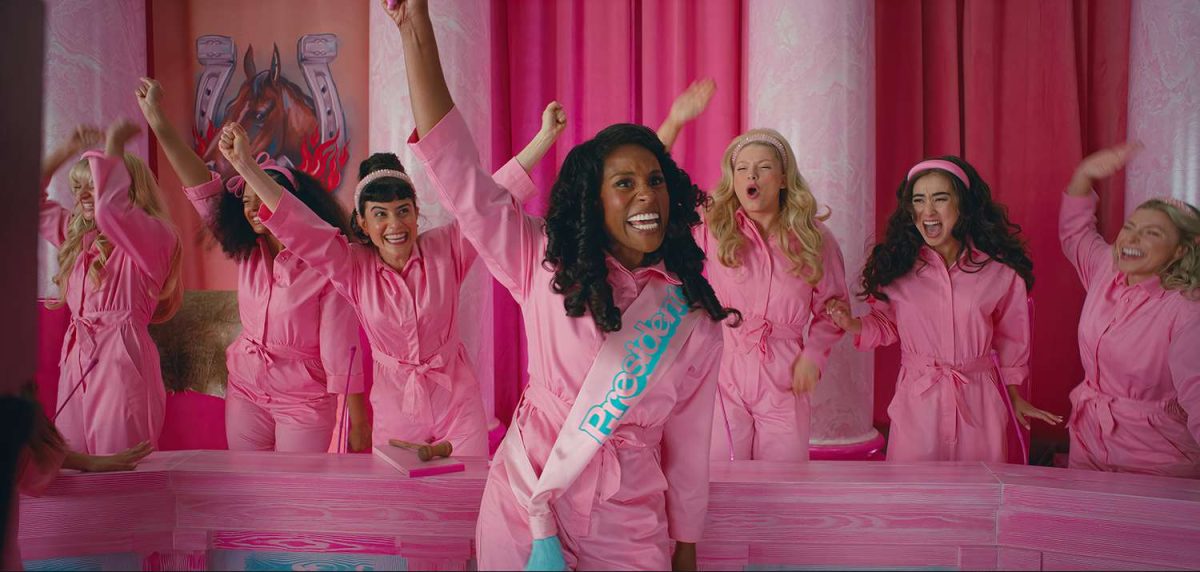The Columbia Mall used to be a much-anticipated trip for my sister Brooke and I when we were younger because we got most of our clothes from stores within five minutes from our house or as hand-me-downs from older friends and relatives. Therefore, we had little need to make the journey across town to go shopping.
On the rare occasion we did venture to the mall with my mom or grandma, Brooke and I would race to the carousel, where we would spend a good portion of the shopping trip begging to go around just one more time. It wasn’t until I was in fourth or fifth grade that I became interested in actually shopping.
I distinctly remember visiting the mall on Saturday afternoons when I was out of school, watching customers of all ages stroll past windows displaying mannequins decked in the latest fashion styles or trail from popular clothing stores hauling bags brimming with fresh purchases. A peek inside name-brand shops, such as American Eagle or Charlotte Russe, revealed a seemingly endless array of garments in every color of the rainbow and every cut imaginable.
The huge selection of clothes fascinated me all through middle school, and I couldn’t wait to find something new to add to my wardrobe. The prices on everything from shorts to shirts were shockingly low compared to designer brands, making it easy to exit the store with several new purchases and still have money left for another trip. All that time, I never stopped to consider where my clothes were actually coming from or why they were so inexpensive, why they never lasted more than a couple years before fraying and coming undone.
My views on the fashion industry changed dramatically toward the end of middle school and the beginning of high school. After talking to other individuals and friends concerned about their fashion footprints, listening to environmental activists such as British YouTuber Venita Falconer and reading several books which exposed the dark side of the fashion industry, I began to take a look at my own clothing consumption.
I was amazed at how many casual tees lived inside my closet but had only experienced a couple wears since I bought them three years ago. Many of them were still in good condition, too. I realized I hadn’t been wearing them partly because the styles had changed, but also because I felt I needed more variety in my outfits, and therefore couldn’t wear the same thing in eighth grade that I wore in fifth grade even if it still fit.
Initially, I felt ashamed at what seemed like excessive greed and flippancy on my part. Further education on the fashion industry and its advertising, however, taught me that the fault was not all mine to bear; I could attribute some of my beliefs to the pressure the industry still places on consumers to buy apparel in order to fit in with society by appearing in style. Fast fashion, or cheap, trendy clothing, further contributes to these messages by enticing consumers with low prices and ever-changing designs.
To promote sales, the fast fashion industry incorporates the most recent catwalk and celebrity styles into its garments. These designs change, however, as soon as new trends hit the runway and become popular, which increases the need to rapidly produce more clothes. This need for speed can come with environmental consequences, such as pollution, and can harm garment workers who produce clothes, according to Good on You, a European activist group that offers sustainability ratings for various clothing brands.
Prior to the 1800s, there wasn’t a need to go shopping every weekend because people made their own clothes and wore them for years. Once the sewing machine and other inventions of the Industrial Revolution became mainstream, factories and “sweatshops,” small factories where workers receive meager, inhumane pay and work under harsh conditions for long hours, were able to produce more clothing for a cheaper price and at faster speeds than previously. Unfortunately, quality working conditions were often poor, as can be seen when the 1911 Triangle Shirtwaist Factory fire killed 146 workers, mainly young, female immigrants in New York City. This cycle of quickly-produced, inexpensive fashion lives on today.
With the digital age of the 21st century, online shopping rose to prominence as retailers such as H&M began to rapidly recreate high-end fashion trends at low prices. The seemingly infinite array of short-lived styles creates pressure for shoppers to make purchases before products leave shelves. As a result, fast fashion apparel is typically of lower quality because it only needs to survive until the next clothing cycle makes its way to stores. The process of producing garments to selling them and, eventually, properly disposing of them is excessively wasteful and has serious consequences for the environment and the people who make our clothes.
The garment production process requires an extensive quantity of natural resources and produces a ridiculous amount of greenhouse gas emissions. Producing a single cotton shirt requires 2,700 liters of water and the amount of greenhouse gases to produce a pair of jeans is equivalent to driving a car more than 80 miles, according to the World Resources Institute. What’s more, the fashion industry ranks second only to oil as the world’s largest polluter, according to the The University of Queensland, Australia. Toxic dyes and microfibers end up contaminating land and bodies of water, and they can harm animals who ingest them. Throwing clothing away perpetuates this cycle of environmental destruction.
Every second, one garbage truck full of unwanted clothing heads to the landfill, where its contents could sit for up to 200 years if they are not made of biodegradable materials. Yet even biodegradable and compostable fabrics require certain temperature and soil compositions to efficiently break down, according to the fashion industry publication, Vogue Business. After I learned the disgusting truth about what happens to rejected clothing, I assumed the next-best step for me would be to donate it to a charity or thrift store like Goodwill. Not all clothing people donate actually goes to charity or textile recycling programs.[/vc_column_inner][/vc_row_inner]A growing number of name brand clothing stores now offer “recycling bins” for customers to get rid of their unwanted garments. In some cases, this is only a form of “greenwashing,” marketing that falsely presents a store or organization as eco-friendly. To illustrate, an article from Newsweek said “only 0.1% of all clothing collected by charities and take-back programs is recycled into new textile fiber.” Meanwhile, major fashion retailers continue churning out garments at rapid speeds.
Thrift stores sort and resell nice clothing they anticipate people wanting to purchase but ship whatever can’t be resold to countries such as Pakistan, where the textile recycling facilities shred the material and use it in furniture or as insulation, according to the online science magazine Science Line. At first glance, recycling unwanted apparel may seem like an eco-friendly solution but, in reality, there are too many clothes to be properly sorted and recycled. Exported textiles can just as easily end up in foreign landfills as in local ones. Dumping our waste into someone else’s community is irresponsible and doesn’t fix the problem.
Aside from the environmental consequences of fast fashion, garment workers may face dangerous work conditions, exposure to harmful chemicals and dyes and low wages that may not be adequate to live off of. Exploiting workers in such ways occurs when companies seek to reduce their own expenses by extending their supply chains to economically developing countries where labor is cheaper and laws to protect workers are few, according to the non-profit international label for renewable energy, EKOenergy. The social and environmental costs of the fashion industry pose consumers with a difficult question: how can we shop and dispose of clothing ethically when so many parts of the fashion industry contribute to environmental destruction and maltreatment of workers?
Several solutions include purchasing less attire, prolonging the life of what one already owns, thrifting and, if one wishes to add something to his or her wardrobe, supporting brands that don’t promote fast fashion, according to Good On You. The transition from buying cheap, low quality styles to more ethically-sound apparel can seem daunting at first and, in my experience, is a process that can take several years. Ultimately, I have found taking stock of what’s in my drawers and finding ways to wear old styles makes me a more creative person and increases my appreciation for what I already own.
I often find it tempting to place fault on big businesses who exploit their workers and the earth solely for their own monetary gains for fueling effects such as pollution that go along with mass producing trendy garments. Trying to pinpoint a single source to blame is impossible because everyone–consumers and business owners alike–contribute to the industry’s problems in one way or another, according to Selflessly Styled, an online resource that provides consumers with information on ethical clothing consumption. It’s time for everyone to recognize fast fashion’s flaws, take responsibility for their actions and do something to change the situation, whether that means better regulating the supply chain or buying second hand to decrease the amount of resources needed to make apparel. Even one group, such as consumers, can make powerful decisions and decrease the demand for new products and slow the system’s cycle.
[parallax_row opacity=”60″ image=”326924″][penci_info_box _text=”1. Take stock of what you own. Once you know what’s in your wardrobe, you will be able to decide what clothes you like and what you do and do not need.
2. Don’t ditch clothes just because they are fast fashion; this only creates more waste. In the future, take a peek inside a thrift store or try swapping clothes with a friend or relative.
3. If a garment is in bad condition, mend it or repurpose it. Try not to throw anything away, and don’t send unwearable clothing to charity shops; it will likely end up in a landfill. Look online for some easy do-it-yourself projects for worn clothes. Worst case scenario, the garment can become a dust rag, and you won’t have to buy any more of those, either.
4. Pay attention to what types of clothing make you feel best. This will help you make smarter choices and consume less clothing.
5.Do your research. If you know a brand’s practices hurt people or the environment, don’t buy from it. To avoid the temptation to purchase new clothes you don’t really need, avoid going into fast fashion retailers entirely.
6. Look for durable and eco-friendly clothes whenever possible. They are longer-lasting and reduce the need to produce more clothes.
7. Swap or rent clothing from family and friends. I find this satisfies my need for something new and is a great idea for parties when I don’t want to spend money on fancy attire that I will only wear several times.
8. Lastly, if you are going to buy new, ask yourself, “Why?” Why are you buying this particular item today? How often will you wear it? Is it going to make you happy for more than one month? If you answer these questions and feel that the article of clothing in question will last for a long time and really is for you and no one else, go ahead and buy it, but make sure you cherish and look out for it by wearing it frequently and mending it when necessary.” _use_line=”true” block_id=”penci_info_box-1582055016238″ _title=”Audrey’s slow fashion advice: how to live, wear and manage your clothing more ethically.”]
What do you think the best way to slow the production of clothes is? Let us know in the comments below.
















































































